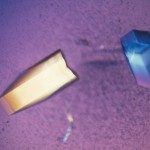Org. Biomol. Chem., 2016, 14, 3638
A straightforward route to original imidazole-based nucleosides that makes use of an enzymatic N-transglycosylation
step is reported in both the ribo- and deoxyribo-series. To illustrate the scope of this
approach, a diverse set of 4-aryl and 4-heteroaryl-1H-imidazoles featuring variable sizes and hydrogenbonding
patterns was prepared using a microwave-assisted Suzuki–Miyaura cross-coupling reaction.
These imidazole derivatives were examined as possible substrates for the nucleoside 2’-deoxyribosyltransferase
from L. leichmannii and the purine nucleoside phosphorylase from E. coli. The optimum transglycosylation
conditions, including the use of co-adjuvants to address solubility issues, were defined.
Enzymatic conversion of 4-(hetero)arylimidazoles to 2’-deoxyribo- or ribo-nucleosides proceeded in
good to high conversion yields, except bulky hydrophobic imidazole derivatives. Nucleoside deoxyribosyltransferase
of class II was found to convert the widest range of functionalized imidazoles into 2’-deoxyribonucleosides
and was even capable of bis-glycosylating certain heterocyclic substrates. Our findings
should enable chemoenzymatic access to a large diversity of flexible nucleoside analogues as molecular
probes, drug candidates and original building blocks for synthetic biology.




